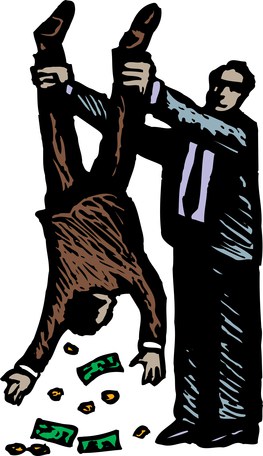 Verizon’s loyal landline customers are subsidizing corporate expenses and lavish spending on Verizon Wireless, the company’s eponymous mobile service, while their home phone service is going to pot.
Verizon’s loyal landline customers are subsidizing corporate expenses and lavish spending on Verizon Wireless, the company’s eponymous mobile service, while their home phone service is going to pot.
Bruce Kushnick from New Networks Institute knows Verizon’s tricks of the trade. He reads tariff filings and arcane Securities & Exchange Commission corporate disclosures for fun. He’s been building a strong case that Verizon has used the revenue it earns from regulated landline telephone service to help finance Verizon’s FiOS fiber network and the company’s highly profitable wireless service.
Kushnick tells the New York Post at least two million New Yorkers with (P)lain (O)ld (T)elephone (S)ervice were overcharged $1,000-$1,500 while Verizon allowed its copper wire network to fall into disrepair. Kushnick figures Verizon owes billions of dollars that should have been spent on its POTS network that provides dial tones to seniors and low-income customers that cannot afford smartphones and laptops.
Verizon’s copper network should have been paid off years ago, argues Kushnick, resulting in dramatically less expensive phone service. What wasn’t paid off has been “written off” by Verizon for some time, Kushnick claims, and Verizon customers should only be paying $10-20 a month for basic phone service. But they pay far more than that.
To ensure a proper rate of return, New York State’s Public Service Commission sets Verizon’s basic service charge of regulated phone service downstate at $23 a month. Deregulation has allowed Verizon to charge whatever it likes for everything else, starting with passing along taxes and other various fees that raise the bill to over $30. Customers with calling plans to minimize long distance charges routinely pay over $60 a month.
Unregulated calling features like call waiting, call forwarding, and three-way calling don’t come cheap either, especially if customers choose them a-la-carte. A two-service package of call waiting and call forwarding costs Verizon 2-3¢ per month, but you pay $7.95. Other add-on fees apply for dubious services like “home wiring maintenance” which protects you if the phone lines installed in your home during the Eisenhower Administration happen to suddenly fail (unlikely).
 In contrast, Time Warner Cable has sold its customers phone service with unlimited local and long distance calling (including free calls to the European Community, Canada, and Mexico) with a bundle of multiple phone features for just $10 a month. That, and the ubiquitous cell phone, may explain why about 11 million New Yorkers disconnected landline service between 2000-2016. There are about two million remaining customers across the state.
In contrast, Time Warner Cable has sold its customers phone service with unlimited local and long distance calling (including free calls to the European Community, Canada, and Mexico) with a bundle of multiple phone features for just $10 a month. That, and the ubiquitous cell phone, may explain why about 11 million New Yorkers disconnected landline service between 2000-2016. There are about two million remaining customers across the state.
New York officials are investigating whether Verizon has allowed its landline network to deteriorate along the way. Anecdotal news reports suggests it might be the case. One apartment building in Harlem lost phone and DSL service for seven months. Another outage put senior citizens at risk in Queens for weeks.
“They don’t care if we live or die,” one tenant of a senior living center told WABC-TV.
Verizon claims Kushnick’s claims are ridiculous.
“There is absolutely no factual basis for his allegations,” the company said.
[flv]http://www.phillipdampier.com/video/WABC New York Seniors vent against Verizon after phone service outage 3-9-16.flv[/flv]
WABC’s “7 On Your Side” consumer reporter Nina Pineda had to intervene to get Verizon to repair phone service for a senior living center that lasted more than a month. (2:50)


 Subscribe
Subscribe